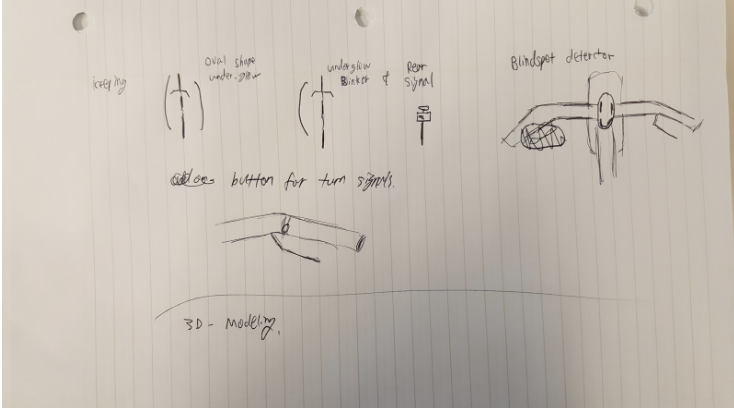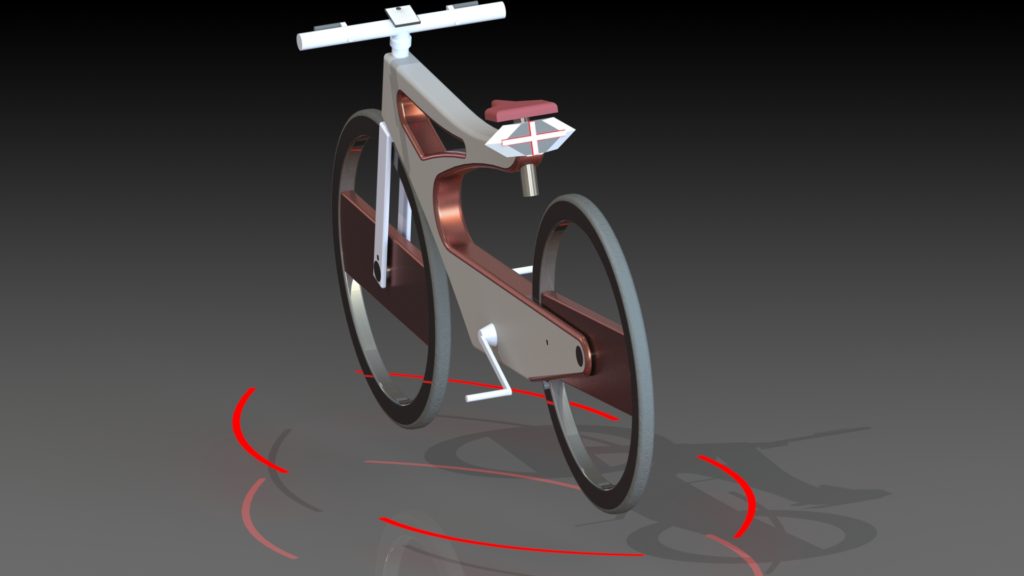RideSafe helps bridge the gap of communication between the drivers and the cyclists by incorporating enhancements to a bicycle.
Role
UX Design | Interaction Design
Duration
September 2017 – December 2017
Context
Over the course of 6 weeks, our team was tasked to come up with a problem space based on one of our classmates that we interviewed. We designed and built a digital prototype as well as created a specification.
Problem Space
As the amount of cyclists has gradually expanded, there has been an increasing amount of cyclist road accidents. Nearly a third of all cyclist injuries are caused when bicyclists are struck by cars. This overall contributes to the problem that many cyclists face: road safety. Cyclists face a higher risk of accidents and road safety due to a lack of communication between the drivers and cyclists. Cyclists communicate by using hand signals to let others know where they are going, which could impair their riding ability. Although cyclists may or may not be using their hand signals, most drivers still don’t know what to do when a cyclist is on the road.
Research
Our first interview with one of our classmates who used their bike as their main form of transportation, highlighted the daily safety struggles of cyclists. After researching and conducting interviews with more cyclists to fully understand the problem, we came up with a solution to help bridge the gap of communication between drivers and cyclists as a way to help improve the safety of cyclists. This solution would incorporate enhancements to an average bike such as, turning signals, blindspot detector, and an overall laser projected image around the bike.
User Testing
Initially we created and sketched out two different prototypes to test out the interactions with users.
- Prototype A included turning the handlebar to activate the turning signal and had a rounded laser projected field.
- Prototype B included handlebar buttons for the turning signals and had a boxed corner laser projected field.


Iteration
Based on the feedback from our user testing, we decided to incorporate the handlebar buttons for the turn signals as they were easier to push and turn on. The rounded laser projected lights were added to the bike as users said they were a better visual indicator to inform the surrounding drivers of the general area of the cyclist and the direction the cyclist is turning. We included a newly designed blindspot detector enhancement that had lines that would point to the top middle to represent the general layout of the road.


High Fidelity Mockups
For this project, the last step was to develop high fidelity mockups. After reviewing all the user feedback, we changed the turning signal indicator to be an arrow light, as it is more easily recognized by drivers. We worked to incorporate bright colors to help the cyclist stand out regardless of the time of day or the weather. Creating these high fidelity mockups helped us bring together all our ideas in a professional manner and convey all the work we had done in the previous weeks. Here is a brief overview of the specification we created, to learn more click the link at the bottom of the page.
Blindspot Detector
This enhancement will notify the cyclist of the general location of cars behind them, more specifically cars that may be in their blind spots. The lines on the display point to the top middle to represent the layout of the road. The lines that light up indicate the general position of the car on the road. These lines would light up when a car is within a 1.5’ range of the bike. Once there are no cars in that range, the display would return back to the default screen.


Turn Signal Indicator & Brake Light
The purpose of the brake light is for the cyclist to signal to the driver of their turns and when they are braking. The turn signal allows the cyclist to indicate which direction they are turning to the drivers on the road. The cyclist would have to press one of the 2 turn signal buttons on either side of the handlebars which correspond to the direction they want to turn. The brake signal is automatically turned on once the bicyclist is using their brakes.





Laser Projected Lights
The purpose of the laser projected lights is to inform surrounding drivers the general area of the cyclist. They also help indicate the direction the biker is turning by blinking on the direction chosen based on the turning signal button selected.




Future Developments
We see RideSafe as a useful tool that can be used by all different types of cyclists. We hope to potentially build partnerships with other cycling companies to help provide these enhancements in more locations, to those who may not have easy access to them, and repair shops. We would like to work with more companies on the development of this product to see what we could improve on and what we can produce.
